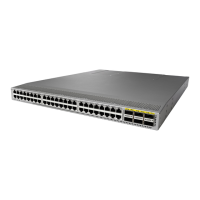Send document comments to nexus3k-docfeedback@cisco.com
6-24
Cisco Nexus 3000 Series NX-OS Unicast Routing Configuration Guide, NX-OS Release 5.0(3)U1(1)
Chapter 6 Configuring Advanced BGP
Configuring Advanced BGP
Configuring Route Reflector
You can configure iBGP peers as route reflector clients to the local BGP speaker, which acts as the route
reflector. Together, a route reflector and its clients form a cluster. A cluster of clients usually has a single
route reflector. In such instances, the cluster is identified by the router ID of the route reflector. To
increase redundancy and avoid a single point of failure in the network, you can configure a cluster with
more than one route reflector. You must configure all route reflectors in the cluster with the same 4-byte
cluster ID so that a route reflector can recognize updates from route reflectors in the same cluster.
BEFORE YOU BEGIN
Ensure that you have enabled the BGP feature (see the “Enabling the BGP Feature” section on
page 5-11).
SUMMARY STEPS
1. configure terminal
2. router bgp as-number
3. cluster-id cluster-id
4. address-family ipv4 {unicast | multicast}
5. (Optional) client-to-client reflection
6. exit
7. neighbor ip-address remote-as as-number
8. address-family ipv4 {unicast | multicast}
9. route-reflector-client
10. show bgp ip {unicast | multicast} neighbors
11. (Optional) copy running-config startup-config
Command Purpose
bgp confederation peers
as-number
[
as-number2...
]
Example:
switch(config-router)# bgp confederation
peers 5 33 44
Specifies a list of autonomous systems that belong
to the confederation. This command triggers an
automatic notification and session reset for the
BGP neighbor sessions.

